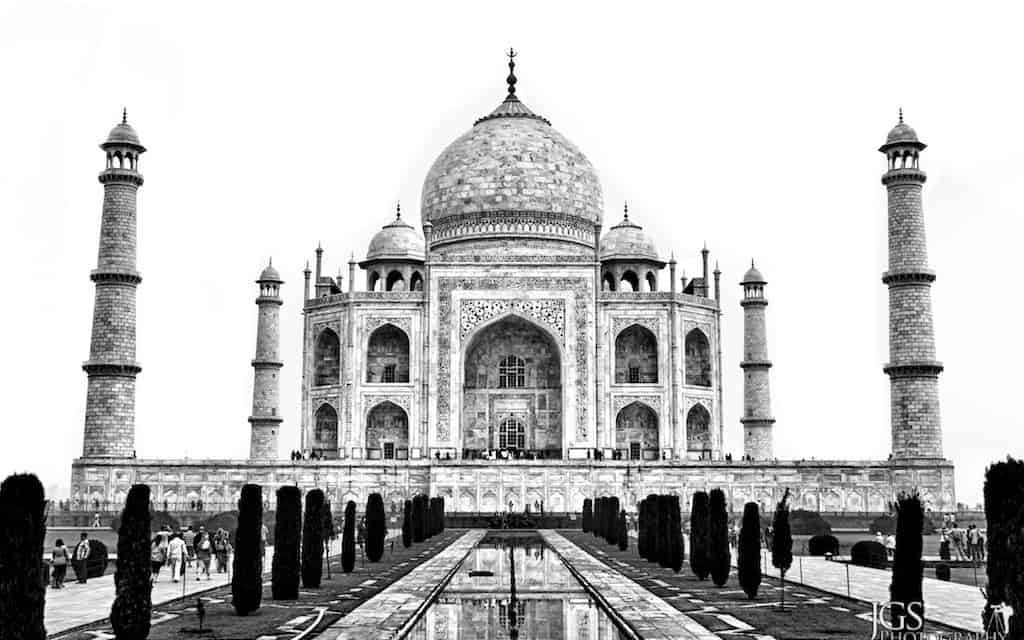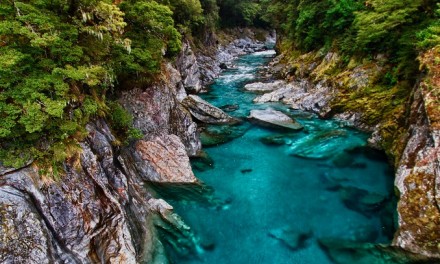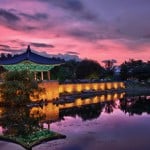Click to view larger size
Photo taken using Tamron AF 18-270mm f/3.5-6.3 Di II VC PZD LD Aspherical IF Macro Zoom Lens
While in India, we took a trip to the city of Agra to visit the Taj Mahal. Valerie and I have always wanted to see this amazing building and we were not disappointed. It is by far one of the most beautiful buildings we have seen in our lives!
I love the symmetry and elegance of it, the story behind it, the mostly white color and the detailed inliad carvings throughout.
The entrance fee was the highest we have encountered at 750 Rupees ($15) per person, but it is a sight that should not be missed if you visit India and was worth it in the end.
We happened to be visiting Agra right around the time of the full moon and were also excited to learn that for the two nights before and after the full moon as well as the night of the full moon, you can purchase moonlight viewing tickets for the same rate as the day tickets. We went the last night of our stay in Agra, 2 nights before the full moon. We would recommend doing this if you have a chance. The experience was very peaceful and something special. It was only us, two other foreigners and an Indian family when we went, which was a stark contrast to the hundreds upon hundreds of tourists we had visited with in the daytime. It was very dark even with the almost full moon shining on the Taj from behind us, but just to sit there and listen to the far away sounds of an Arab prayer call and the crickets while looking at the Taj was quite special and peaceful.
How To Get Moon Viewing Tickets
Moon viewing tickets cannot be purchased at the main ticket gates of the Taj. They must be purchased a day in advance from the Archeological Survey Of India Headquarters in Agra. It is a pink building about a 3 KM drive from the Taj and should cost about 150 Rupees for a return trip. You will need your passport to purchase the tickets.
NOTE TO PHOTOGRAPHERS: No tripods of any kind are allowed in the Taj Mahal grounds. In the daytime you can usually get an exception to this by going to the Archeological Survey Of India Headquarters Office in Agra a day before and asking for permission and the proper paper work. For night viewing you are not allowed a tripod and, as far as I could find, can’t get special permission for it at all. You are only allowed one camera per person and no video cameras for the night viewing. On the day viewing I had already put my larger Velbon UT 43D travel tripod in the locker and come back though the security check when they found my Joby cell phone tripod I had forgotten was in my bag and they made me take that to the locker as well. The Locker is about a 8 minute walk round-trip from the entrance, so it is a bit of a pain to go to and get back from. Please leave your tripod in your hotel or put it in the lockers before trying to enter. They will find it and make you do a locker run otherwise. The night viewing, from our experience, was too dark for pictures with anything but full manual settings and, since no tripods are allowed, you must get creative with the wobbly barricade railings and ground in order to get a decent shot.
Travel Photo Of The Week Sponsored By Tamron USA.  For more information about Tamron and the lenses we use, check out our sponsors page here.
For more information about Tamron and the lenses we use, check out our sponsors page here.











